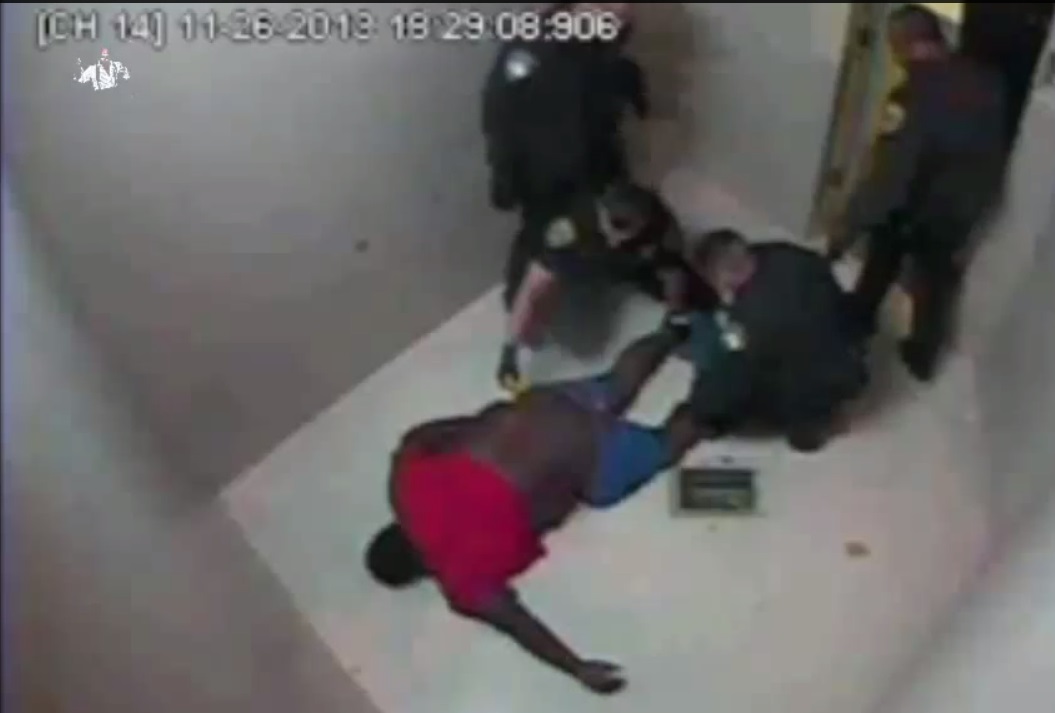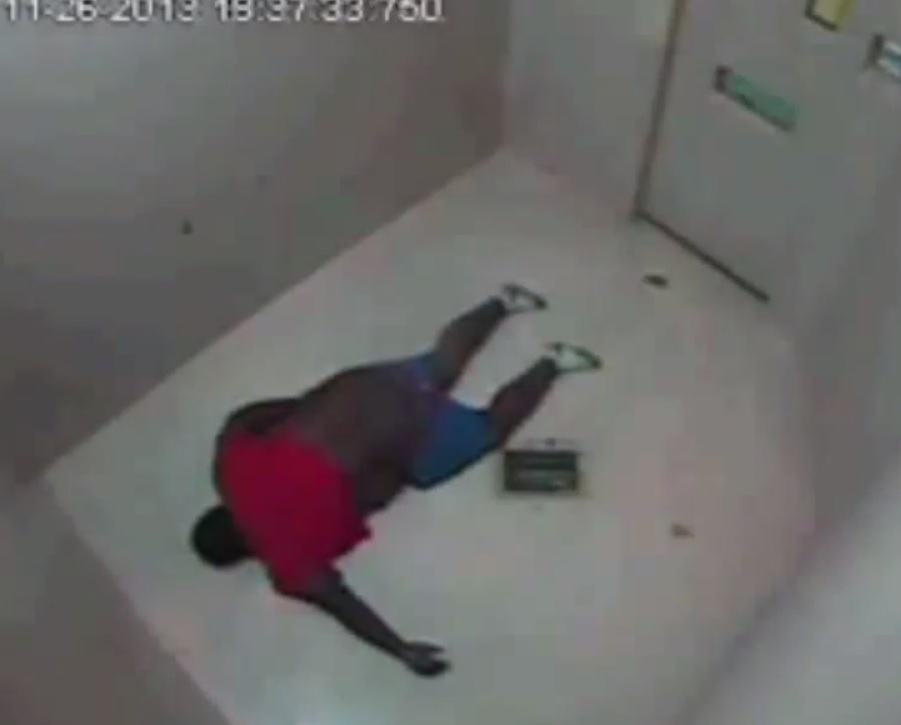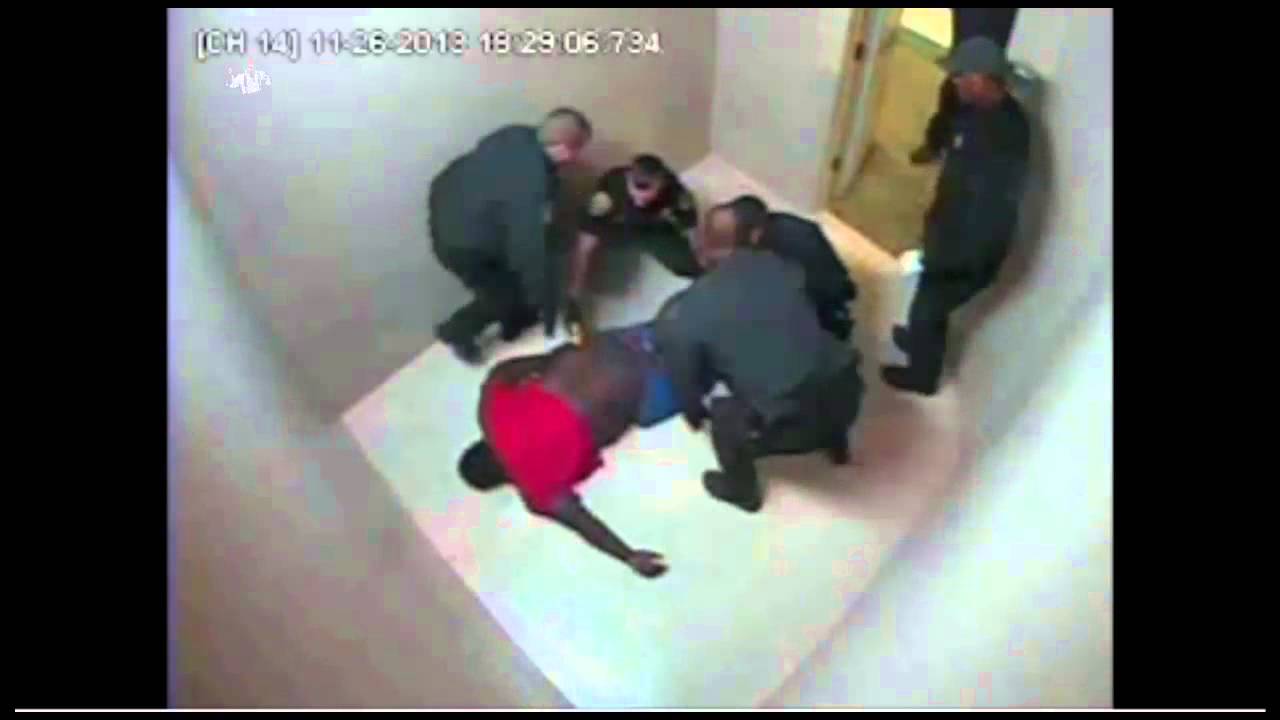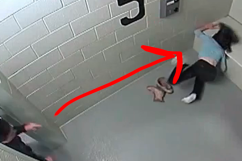Newly released video showing the moments before a Louisiana man died in a jail cell while in police custody contradicts the officers’ version of what happened.
Ervin Leon Edwards died November 26, 2013, after being arrested for wearing sagging pants, which are banned in Port Allen, according to The Advocate, a Baton Rouge newspaper. The paper recently acquired the video showing what happened in a West Baton Rouge Parish jail after Edwards was arrested.
Edwards was taken into custody after police were called to a Port Allen gas station following an argument Edwards was having with his girlfriend. When they arrived, the argument was over. Police questioned Edwards about his sagging pants, and then arrested him, The Advocate reports.
The video shows several officers piling on Edwards while one presses a Taser against Edwards’ buttocks. The officers then get off of Edwards and leave, before eventually returning to provide medical attention.
Edwards, 38, was later pronounced dead, with an autopsy finding his cause of death determined to be “undetermined” and the result of “acute cocaine and phencyclidine (PCP) intoxication in association with restraint by law enforcement,” according to The Advocate.
Here’s what you need to know:
1. The Video Shows an Officer Held a Taser on Him for 1 Minute, Contradicting Earlier Claims

Officer Dustin McMullan is seen in jail cell surveillance video holding a Taser to Ervin Leon Edwards.
Officer Dustin McMullan is seen in the video pressing a yellow Taser against Edwards for about one minute. It’s not clear how long the Taser is activated, but a blue light can be seen from the Taser for about 45 seconds, according to The Advocate’s analysis of the video.
The video appears to contradict what McMullan has previously claimed. McMullan said in his report that he warned Edwards three times before using the Taser. According to The Advocate:
‘I then pulled the trigger on the Taser using the full five second circle on Edwards,’ he wrote, meaning he shocked him for five seconds, which is the longest a shock can be applied without stopping for a brief time and pulling the trigger again. ‘However, the Taser did not appear to have any effect on Edwards.’
‘Due to the obvious lack of effect of the Taser, I then re-holstered it,’ McMullan wrote. ‘I then again assisted in restraining Edwards using empty hand control techniques’ before the officers were able to remove the restraints from Edwards’ ankles and hands and all exit the cell.
2. Edwards Was Left Alone & Unresponsive in the Cell for 10 Minutes Before He Was Given Medical Aid

The video shows the officers leaving Edwards alone in the cell. He is not responsive when the officers leave and does not appear to move during the 10 minutes before they return to provide medical aid. Officers can be seen looking through the window to check on Edwards without entering to help him.
Greg Meyer, a retired LAPD captain who has become a nationally recognized use-of-force expert, told The Advocate:
The fact that the subject appeared unresponsive, perhaps unconscious on the floor as the officers withdrew from the cell, should have resulted in an immediate request for medical intervention and a quick determination of whether there was a pulse or breathing. If not, CPR should have been started immediately.
3. An Internal Review Found No Criminal Wrongdoing by the Officers

Colonel Richie Johnson of the West Baton Rouge Parish Sheriff’s Office told The Advocate that an internal review did not find any criminal wrongdoing by the officers involved before or after Edwards’ death. He said the findings of that review were passed on to the federal Department of Justice. Johnson did not comment further because of pending litigation.
The Advocate said the local FBI and U.S. Attorney’s office refused to comment on whether they were involved in an investigation or even if one existed.
John Jakuback, an attorney for Officer McMullan and another officer, told The Advocate:
The witness statements taken at the scene of Mr. Edwards’ arrest at the gas station, video footage, and Jefferson Parish autopsy report confirm that neither Port Allen officer acted in any way inappropriately. And that no action taken by those officers caused or contributed to Mr. Edwards’ unfortunate death.
In December 2013, a month after Edwards’ died, Sheriff Mike Cazes told WBRZ that he “has nothing to hide.”
“I welcome anybody to come in,” and look at the evidence, Cazes said.
4. His Girlfriend Told Officers He Had Health Issues That Could Make the Use of a Taser Fatal

Ervin Edwards (Family photo)
According to The Advocate, Edwards girlfriend asked police at the scene to not use their Tasers on him because of his high blood pressure. She also told the officers he had been diagnosed with schizophrenia and was deaf in his left ear.
The officers at the gas station were able to restrain him without using a stun gun.
“The drugs didn’t kill him,” Viney Edwards, Ervin Edwards mother, told The Advocate. “The police killed him.”
The Edwards’ family previously said he had a history of arrests on drug and other charges.
“What his life was about before he went to jail has nothing do with not coming out of that jail. They killed him,” Viney Edwards told WAFB.
His sister was shocked by the footage.
“I just can’t believe it. The beating, the torture they did my brother,” Elizabeth Edwards told WAFB. ““I was expecting to see at least some kind of fight, but there was none. They lied.”
Sheriff Mike Cazes told WAFB that the officers, “gave him a three count demand saying ‘Okay if you don’t cooperate, you will be tased. All three times, ultimately, he used some profanity back toward the policeman and said ‘do what you have to do.”
Edwards’ family has filed a federal lawsuit against the Cazes, the officers and others.
“Even if this was a legitimate arrest you don’t have the right to kill someone,” attorney Joel Porter told The Advocate in January. “He was tased after the deputies were informed about his medical conditions. And not only did they tase him, they beat this man. I can assure you this family wants justice.”
“This was a callous act … to kill an unarmed man. I don’t have to wait for an autopsy report. He was alive when he walked into that jail. They beat him, tased him and now they’re trying to cover it up,” Porter said.
Read the full civil complaint filed in federal court by Porter:
5. A Corrections Expert Said the Video is ‘One of the Worst Things I’ve Seen’
Another law enforcement expert, Glenn Holt, who worked for more than 20 years in detention centers, called the actions in the video “bad practice all thew way around,” and one of the worst things I’ve seen,” according to The Advocate.
Holt told the newspaper he has concerns about the delay before medical attention was provided to Edwards and questioned whether other restraint efforts were made in the cell. He also questioned whether several large men needed to be pressing down on Edwards in the cell, even with his large size. He told the paper the best practice is to only use as much force as necessary to gain compliance, and said it’s imperative to provide medical attention as soon as possible if force is used.

